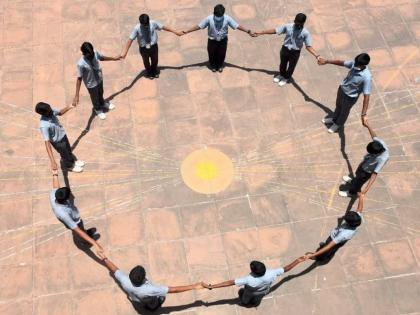Maharashtra to witness Zero Shadow Day between May 3 and May 31, check details here
By Lokmat English Desk | Updated: May 3, 2023 15:25 IST2023-05-03T15:23:05+5:302023-05-03T15:25:22+5:30
Similar to last year, people will once again witness zero shadows this year, where the sun shines directly overhead, ...

Maharashtra to witness Zero Shadow Day between May 3 and May 31, check details here
Similar to last year, people will once again witness zero shadows this year, where the sun shines directly overhead, causing no shadows to be cast. This phenomenon will occur across various cities in Maharashtra, on different dates from May 3 to May 31.
In India, there are specific days when the sun is positioned directly overhead, resulting in zero shadows being cast. These occurrences happen twice a year at Indira Point in the Andaman and Nicobar Islands on April 6th and September 5th. Similarly, Zero Shadow Day occurs on April 10th and September 1st in Kanyakumari. In the southern state of Telangana, this phenomenon can be observed in cities located at various latitudes until May 2nd.
During the period of May 3 to May 31 in Maharashtra, there will be no occurrence of shadow at any given time of the day. However, it should be noted that the town of Sawantwadi in Kolhapur district will experience a zero shadow day on May 3, while Dhule district will experience it on May 31. It is important to keep in mind that due to variations in latitudes across Maharashtra, there may be slight differences in the timing of zero shadow days in different cities and villages. To accurately observe this phenomenon, one should observe the position of the sun between 12 noon to 12:35 pm.
Starting on May 3rd, there will be a Zero shadow phenomenon in Sawantwadi, Shiroda, and Ambeli, followed by other cities at later dates. On May 17th, the zero shadow will begin in several cities in Vidarbha, including Aheri and Alapalli. Then, on May 20th, it will occur in Chandrapur, Washim, Wani, and Mul; on May 21st in Chikhli, Gadchiroli, Sindewahi; on May 22nd in Chalisgaon, Buldhana, Armori, and Yavatmal; on May 23rd in Khamgaon, Akola, Desaiganj, Bramhapuri, and Nagbhid; on May 24th in Shegaon, Wardha, and Umred; on May 25th in Jalgaon, Bhusawal, and Amravati; on May 26th in Nagpur, Bhandara and paratwada; on May 27th in Chikhaldara, Tumsar, Gondia, Savner, Katol and Ramtek. Finally, on May 31st, the zero shadow phenomenon will be visible in and around Toranmal.
What is Zero Shadow Day?
Uttarayan (movement of the Sun from south to north from winter solstice to summer solstice) and Dakshinayan (back from north to south) happen because Earth’s rotation axis is tilted at an angle of roughly 23.5° to the axis of revolution around the Sun.
Ramanujam explained that the Sun’s location moves from 23.5°N to 23.5°S of Earth’s equator and back. All places whose latitude equals the angle between the Sun’s location and the equator on that day experience zero shadow day, with the shadow beneath an object at local noon.
“We have all studied in school that the Earth’s rotation axis is inclined at 23.5 degrees to the plane of its revolution around the Sun, which is why we have seasons. This also means that the Sun, in its highest point of the day, will move from 23.5 degrees south of the celestial equator to 23.5 degrees north of the equator (Uttarayan), and back again (Dakshinayan), in a year. Of course, the northern most and southern most points are the two solstices, and the crossing of the Sun across the equator are the two equinoxes,” the ASI says on its website.
Open in app